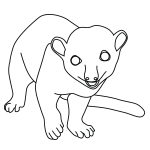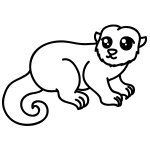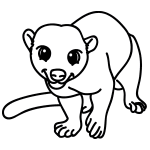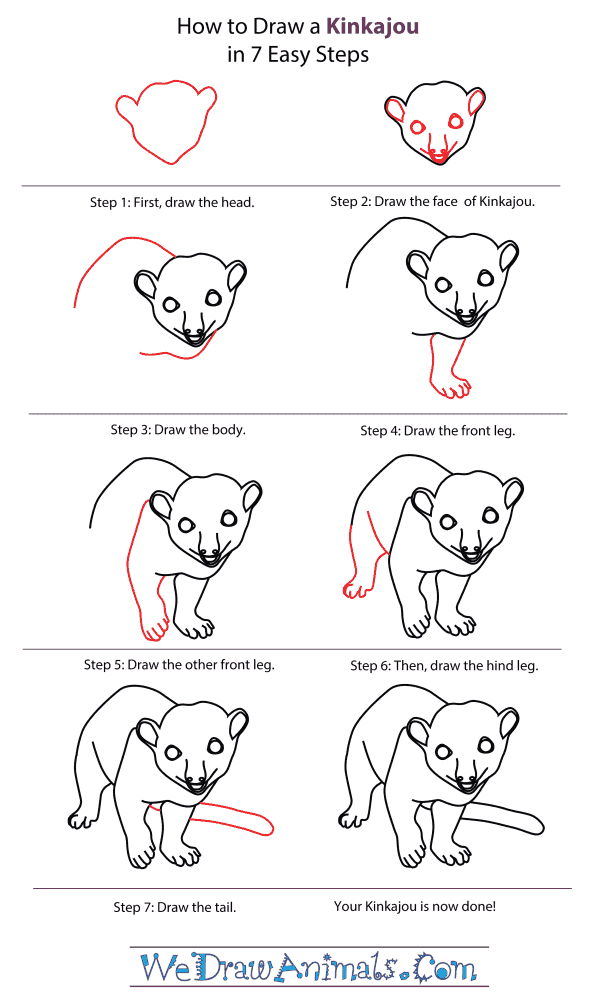In this quick tutorial you'll learn how to draw a Kinkajou in 7 easy steps - great for kids and novice artists.
The images above represent how your finished drawing is going to look and the steps involved.
Below are the individual steps - you can click on each one for a High Resolution printable PDF version.
At the bottom you can read some interesting facts about the Kinkajou.
Make sure you also check out any of the hundreds of drawing tutorials grouped by category.
How to Draw a Kinkajou - Step-by-Step Tutorial
Step 1: First, draw the head as shown above. It might be helpful to think of a heart shape when doing so. Make sure to have the ears come out from the head.
Step 2: Draw two circles with circles inside of them for the eyes, two ovals for the ears, and a curved line with a semi-circle below it for the mouth. Add two line coming up from the mouth and two tiny circles between them for the nose.
Step 3: Draw the body by making two lines that come off of both the top and bottom of the head, both with curves. The top half should be that it looks like the Kinkajow has a hump on its back.
Step 4: Draw the front leg with two vertical lines that curve right at the foot. Be sure to add some lines for the toes.
Step 5: Draw the other front leg kind of like the first one, except have it a little raised off the ground and at a different angle like shown above.
Step 6: Draw the hind leg coming off of the leftmost part of the body, adding a line coming from the left front arm to define the body. Add some lines for toes.
Step 7: Draw the tail with a single line between the front legs and two lines that meet at a curve on the right side of the drawing. Your Kinkajou is now done!
Interesting Facts about Kinkajous
Kinkajous are mammals that are native to the tropical rainforests of southern Mexico and Brazil. The word “kinkajou” translates to “honey bear.” Their scientific name, Potos flavos, means “golden drinker.” Kinkajous are known to go from flower to flower to drink the nectar. They also eat the honey from beehives.
Did you know?
- Although kinkajous look more like primates, they are actually related to red pandas and raccoons.
- Kinkajous are about 10 inches tall and weigh between 3 and 7 pounds.
- Kinkajous have long tongues, which helps them reach the honey in a hive. Their tongs can be up to 5 inches long.
- Kinkajous are arboreal, which means that they spend most of their lives in trees.
- Kinkajous can turn their feet backwards so that they can climb down trees headfirst.
- Kinkajous are nocturnal. They sleep during the day and look for food at night.
- Kinkajous are omnivores, and their favorite food is fruit. They also eat eggs, insects, and small invertebrates.
Kinkajous have a prehensile tail. A prehensile tail is one that is used like a hand. Kinkajous use their tails to hang from branches, and it also helps them maintain their balance. The tail is almost as long as their body.











